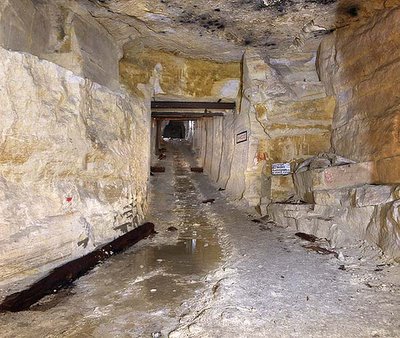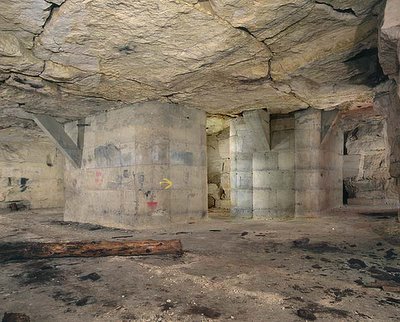
[Image: A map of Wiltshire’s Ridge quarry/bunker system; see below].
An article I’ve not only forwarded to several people but planned whole screenplays around, frankly, reveals that there is a sprawling complex of tunnels located beneath Belgrade.
There, a recent police investigation “into the mysterious shooting of two soldiers has revealed the existence beneath the Serbian capital of a secret communist-era network of tunnels and bunkers that could have served as recent hideouts for some of the world’s most-wanted war crimes suspects. The 2-square-mile complex – dubbed a ‘concrete underground city’ by the local media – was built deep inside a rocky hill in a residential area of Belgrade in the 1960s on the orders of communist strongman Josip Broz Tito. Until recently its existence was known only to senior military commanders and politicians.”
So how big is this concrete underground city?
“Tunnels stretching for hundreds of yards link palaces, bunkers and safe houses. Rooms are separated by steel vault doors 10 feet high and a foot thick. The complex has its own power supply and ventilation.”
But hundreds of yards? That’s nothing.

A secret, 240-acre underground bunker-city has recently come onto the UK housing market.


With 60 miles of tunnels, located 120 feet underground, the whole complex is worth about 5 million quid.


The complex was constructed “in a former mine near Corsham in Wiltshire where stone was once excavated… for the fine houses of Bath.”
This subterranean city, as the Times tells us, “was a munitions dump and a factory for military aircraft engines. It was equipped with what was then the second largest telephone exchange in Britain and a BBC studio from where the prime minister could make broadcasts to what remained of the nation.”
Radio broadcasts echoing across a landscape of craters.



[A note on these images: these are all photographs – by the very talented and highly prolific Nick Catford – of the Ridge Quarry, in Corsham, Wiltshire, which geographically matches with the Times description, above. That said, the description of the Ridge Quarry provided by Subterranea Britannica does not seem to indicate that we are, in fact, looking at the same mine/quarry/bunker system. (There is a discrepancy in the amount of acreage, for instance). Anyone out there with info, thoughts, or other et ceteras, please feel free to comment… Either way, however, they’re cool images, and Subterranea Britannica is always worth a visit now and again].


